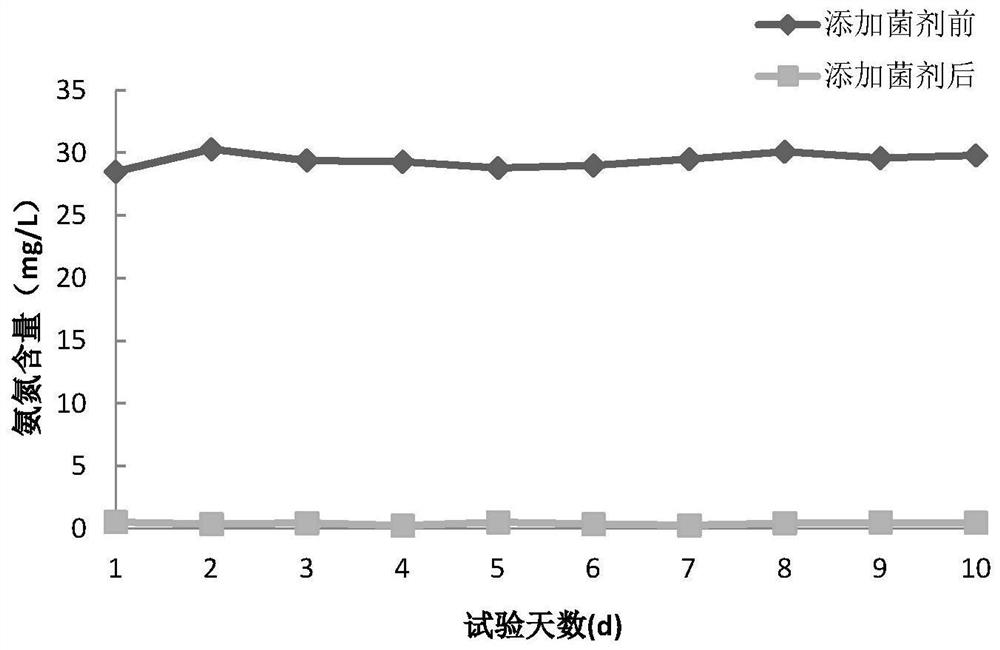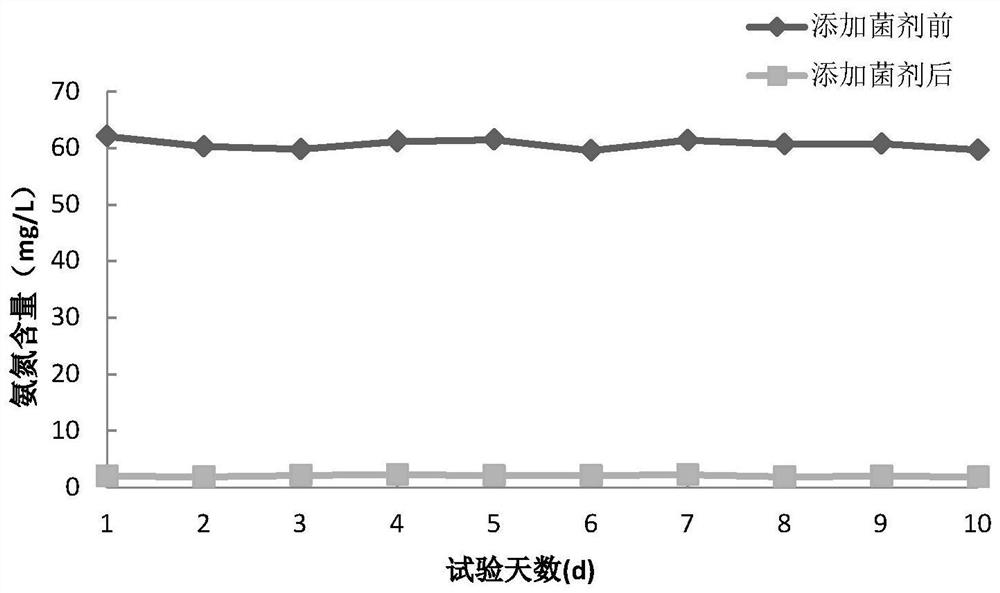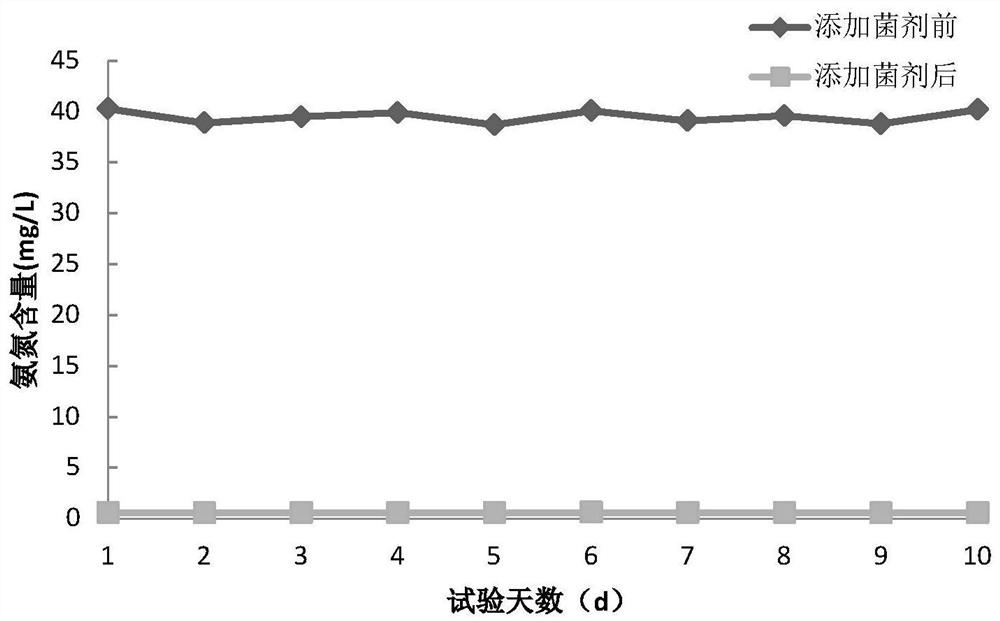A thiourea-degrading bacterial strain and a method for treating thiourea-containing wastewater using the strain
A thiourea and bacterial strain technology is applied in the field of environmental microorganisms, which can solve the problems of secondary pollution and difficult discharge of waste water, and achieve the effects of stable effluent quality, avoidance of secondary pollution, and simple operation and management.
- Summary
- Abstract
- Description
- Claims
- Application Information
AI Technical Summary
Problems solved by technology
Method used
Image
Examples
Embodiment 1
[0046] The composition of the seed medium is by weight (w / w): The composition of the seed medium is by weight (w / w): glucose 1.3%, ammonium sulfate 0.5%, yeast extract powder 1%, magnesium sulfate 0.05%, Potassium dihydrogen phosphate 0.05%, add water to 1000mL, pH7.3~7.4; sterilize at 121℃, 0.15Mpa for 20min;
[0047] The amount of inoculum is to inoculate one test tube slant strain after activation (transfer the test tube slant strain stored on nutrient agar medium at 4°C to room temperature for activation for 4h-8h) per Erlenmeyer flask (100mL culture medium). The culture temperature is 33°C, the shaker speed is 200r / min, the culture time is 12h, and the seed solution OD 600 is 0.7;
[0048] Submerged fermentation medium composition, by weight (w / w): corn flour 1.4%, soybean meal 2%, ammonium nitrate 0.4%, manganese sulfate 0.04%, magnesium sulfate 0.03%, sodium chloride 0.03%, ferrous sulfate 0.001 %, calcium chloride 0.02%, add water to 1000mL, pH7.3~7.4; sterilize at 1...
Embodiment 2
[0055] The composition of the seed medium is by weight (w / w): The composition of the seed medium is by weight (w / w): glucose 2%, ammonium sulfate 0.7%, yeast extract powder 0.4%, magnesium sulfate 0.1%, Potassium dihydrogen phosphate 0.03%, add water to 1000mL, pH7.3~7.4; sterilize at 121℃, 0.15Mpa for 20min;
[0056] The amount of inoculum is to inoculate one test tube slant strain after activation (transfer the test tube slant strain stored on nutrient agar medium at 4°C to room temperature for activation for 4h-8h) per Erlenmeyer flask (100mL culture medium). The culture temperature is 35°C, the shaker speed is 160r / min, the culture time is 14h, and the seed solution OD 600 is 0.8;
[0057] Submerged fermentation medium composition, by weight (w / w): corn flour 1%, soybean meal 1.4%, ammonium nitrate 0.5%, manganese sulfate 0.01%, magnesium sulfate 0.08%, sodium chloride 0.01%, ferrous sulfate 0.004 %, calcium chloride 0.05%, add water to 1000mL, pH7.3~7.4; sterilize at 12...
Embodiment 3
[0064] The composition of the seed medium, by weight (w / w): glucose 1%, ammonium sulfate 0.8%, yeast extract powder 0.2%, magnesium sulfate 0.09%, potassium dihydrogen phosphate 0.01%, add water to 1000mL, pH7.3~ 7.4; 121℃, 0.15Mpa sterilization for 20min;
[0065] The amount of inoculum is to inoculate one test tube slant strain after activation (transfer the test tube slant strain stored on nutrient agar medium at 4°C to room temperature for activation for 4h-8h) per Erlenmeyer flask (100mL culture medium). The culture temperature is 30°C, the shaker speed is 180r / min, the culture time is 18h, and the seed solution OD 600 is 0.5;
[0066] Submerged fermentation medium composition, by weight (w / w): corn flour 2%, soybean meal 1.6%, ammonium nitrate 0.2%, manganese sulfate 0.05%, magnesium sulfate 0.05%, sodium chloride 0.05%, ferrous sulfate 0.003 %, calcium chloride 0.01%, add water to 1000mL, pH7.3~7.4; sterilize at 121℃, 0.15Mpa for 20min;
[0067] Submerged fermentatio...
PUM
 Login to View More
Login to View More Abstract
Description
Claims
Application Information
 Login to View More
Login to View More - R&D
- Intellectual Property
- Life Sciences
- Materials
- Tech Scout
- Unparalleled Data Quality
- Higher Quality Content
- 60% Fewer Hallucinations
Browse by: Latest US Patents, China's latest patents, Technical Efficacy Thesaurus, Application Domain, Technology Topic, Popular Technical Reports.
© 2025 PatSnap. All rights reserved.Legal|Privacy policy|Modern Slavery Act Transparency Statement|Sitemap|About US| Contact US: help@patsnap.com



